Bees and Wasps - and other flying insects in your garden
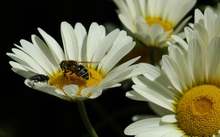
There are many flying creatures in your garden, some of which may easily be mistaken for honey bees. The friendly bumble bee is easy to identify and although there are many different types, they are generally rounded, with large furry bodies. They are generally dark in colour, perhaps with white or red tails.
They move gently from flower to flower, are not in any way aggressive and simply get on with what they are doing. If they appear to live in the ground, emerging from small holes in the soil, or from under decking or shed floors or from your compost heap, they are most likely to be bumble bees.
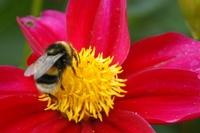
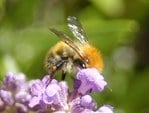
They are threatened species and should be cared for. Left alone, they cause no inconvenience. They live in small nests of less than 200 creatures. They do not swarm and they will, with the exception of the queen, all die during the autumn. They should not be disturbed and beekeepers will not attempt to remove them, except in very exceptional circumstances. They are delightful creatures and will do you and your pets no harm.
Wasps are quite different. They are black and yellow with clearly segmented bodies. They are slender and quite pointed or more stream-lined than honey bees.
Wasps build nests of chewed up wood to create a round nest that is grey-ish in colour. Frequently found in roof spaces, hanging in sheds or barns, under roofs or simply hanging in bushes, they appear in mid-summer and will die out in early autumn.
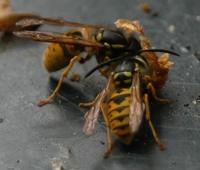
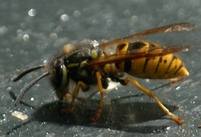
Wasps do not swarm and beekeepers will not welcome being called out to deal with wasps. If you have wasps and wish to be free of them, purchase insect powder and apply it, according to instructions on the container in the evening when all the flying creatures are at home. Alternatively, call a pest control company or the pest control department of the District Council.
Miner bees are smaller and slimmer than honey bees and generally appear early in the year. Frequently living in dry soil, they seem to appear at the same time, sometimes in large numbers. They then disappear just as quickly as they arrived.
Hornets are not numerous in this country. They are in the order of 4 times as large as wasps with similar physical characteristics. They appear a little darker in colour, but again are not aggressive unless interfered with. Nests are similar to wasps’ nests, made of papier mache like material. Left alone, they are not a nuisance. If they prove to be, call your District Council. Beekeepers will not be able to help, other than to confirm identification.
For more information about Swarms of bees etc. click here
For more information about Bumble bees etc. click here
Chart to quickly show difference between Honey Bees, Bumblebees Wasps and Hornets. click here
How to identify the Asian Hornet (Vespa velutina). click here
